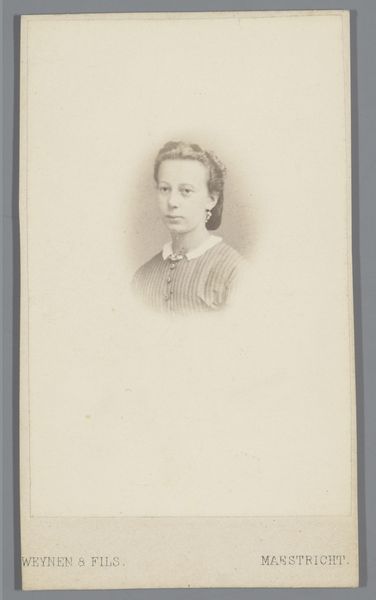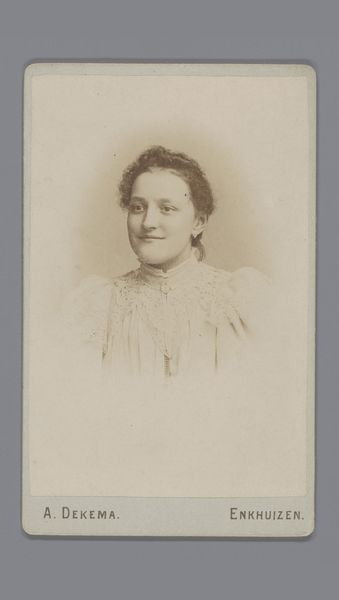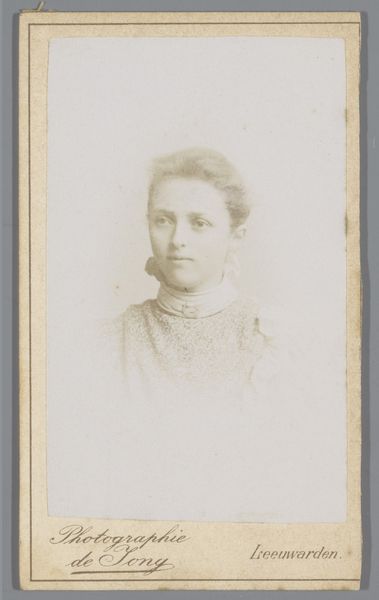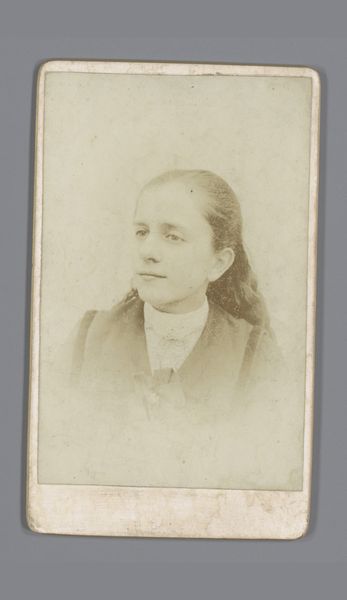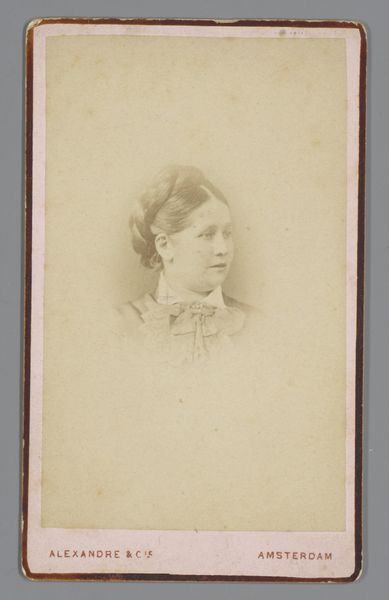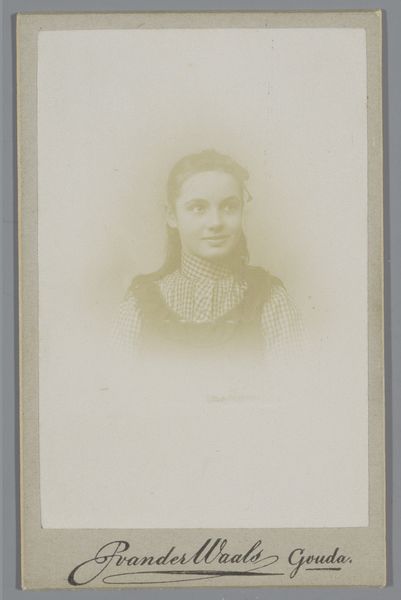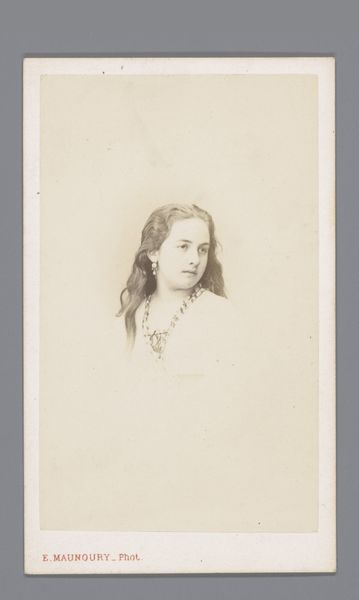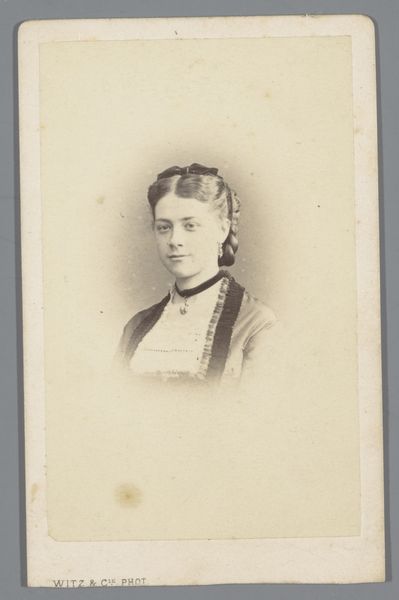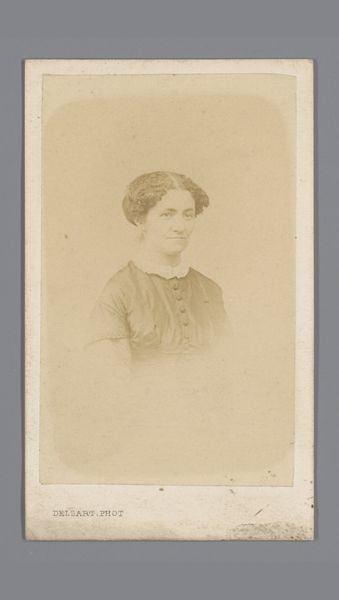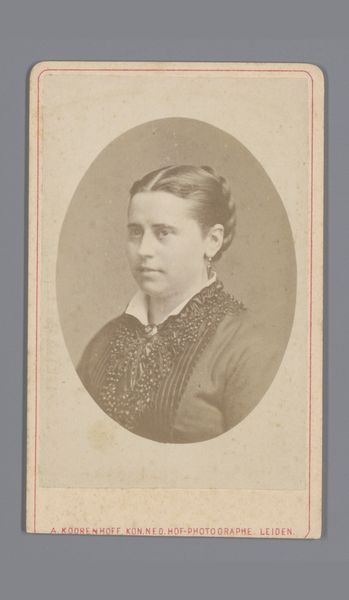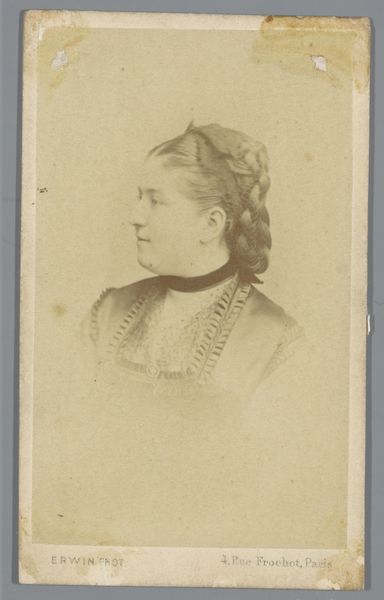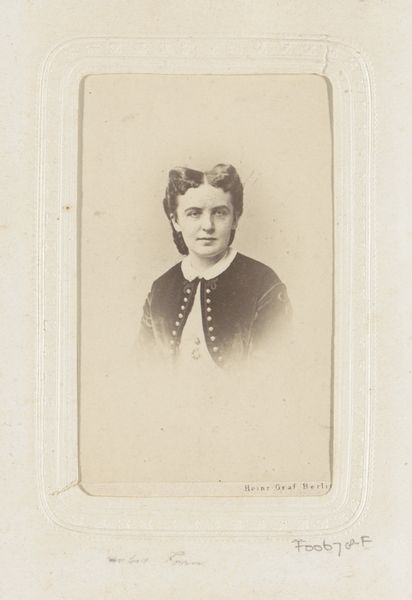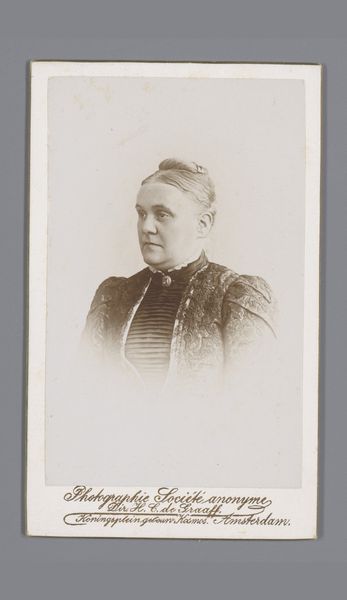
photography, albumen-print
#
portrait
#
photography
#
albumen-print
Dimensions: height 105 mm, width 64 mm
Copyright: Rijks Museum: Open Domain
Curator: This is an albumen print titled "Portret van een onbekende vrouw" by Eugène Manoury, created sometime between 1870 and 1885. The name translates to “Portrait of an Unknown Woman”. Editor: It has a strikingly melancholic aura, doesn't it? The soft sepia tones add a layer of nostalgia, but her gaze carries a certain weight. Curator: The albumen print process itself is significant. It was one of the first commercially viable methods of producing photographs on paper from a glass negative, popularized because it produced finely detailed images. It demanded incredible labor, with egg whites being whipped, coated, and dried onto paper, just to create the base layer! Editor: And considering the timeframe, post-Civil War and during a period of rapid industrialization, who was this woman? It makes you wonder about the class and gender politics that shaped her identity, particularly her ability to afford a studio portrait. How much agency did she have in constructing her own image? Curator: That's key. The emerging market for photographic portraiture provided opportunities and constraints. We need to examine her dress, her posture, to try to decode the signals she—and the photographer—were sending. Photography during this period democratized portraiture to some extent, moving it out of the realm of solely painted works, making it more accessible to the bourgeoisie, but still required time and resources. Editor: True, there’s an inherent performativity to portraiture of this era. Studio portraits provided women with one of the few socially acceptable avenues for self-representation, yet, those representations were inevitably filtered through the prevailing societal expectations of femininity. Think about how restrictive expectations were on female identity at that point. Curator: Also consider the consumption of these images. Were these displayed publicly, kept privately, sent across long distances? The very act of commissioning this albumen print, of engaging in the exchange between subject and photographer, reveals broader historical and material contexts that shaped 19th century life and visual culture. Editor: Precisely, examining her portrait forces us to grapple with questions of anonymity, visibility, and the enduring power of images to connect us across time, even to those whose stories remain largely untold. It’s a reminder to consider who has the privilege to leave a trace and how social conditions are deeply interwoven with individual experiences. Curator: It shows how the evolution of materials shaped visual history. It's fascinating. Editor: Indeed, it makes one consider who she was and what impact the work had at that time.
Comments
No comments
Be the first to comment and join the conversation on the ultimate creative platform.
